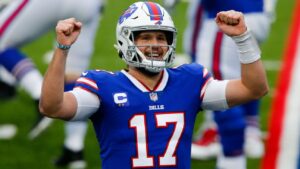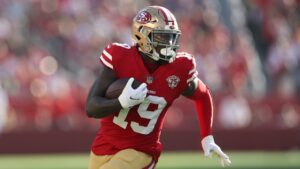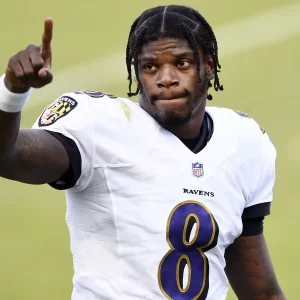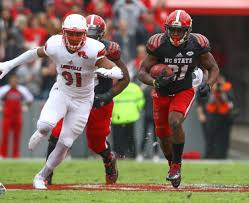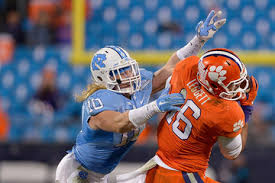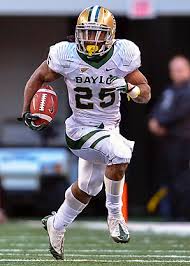
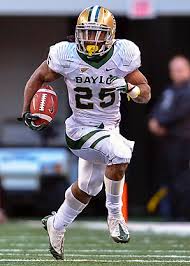 Throughout the 2014 draft player analysis discussions, there are only a few prospects that cause so much debate. If you watch ten or twelve of Seastrunk’s best runs, the running back has the look of a Hall of Famer, but that is why watching entire games is more important. I watched seven of his games (2013: West Virginia, Iowa State, Kansas, and Central Florida; 2012: UCLA, Texas, Texas Tech) to get a better idea of what kind of back he is.
Throughout the 2014 draft player analysis discussions, there are only a few prospects that cause so much debate. If you watch ten or twelve of Seastrunk’s best runs, the running back has the look of a Hall of Famer, but that is why watching entire games is more important. I watched seven of his games (2013: West Virginia, Iowa State, Kansas, and Central Florida; 2012: UCLA, Texas, Texas Tech) to get a better idea of what kind of back he is.
The former transfer from Oregon has decent size for a running back at 5′ 9″ 209 lbs., but did not wow anyone with his 4.51 forty yard dash time at the Combine. When you review his college stats, a few things jump out at you: the back has less than 300 career touches, ran for over a thousand yards each of his two seasons, averaged at least 7.4 yards a carry with only nine career catches. The yards per carry stat is a bit misleading as Baylor ran a spread offense that did not ask Seastrunk to catch a lot of passes and gave him some big, wide lanes to run though. At the Combine, the back caught the ball fine, but there is a huge difference between catching passes with no equipment or defense versus in a game situation, so it is definitely a slight knock to his game.
If you are looking for a big, strong, powerful runner, I would look at a back like Carlos Hyde as Lache Seastrunk isn’t that type of back. When the former Baylor back ran inside without receiving much of an opening from his offensive line and scheme, he would get tackled at the line of scrimmage or shortly afterwards quite often. The runner has questionable leg strength and seemed to get arm-tackled and/or tackled high quite a bit once he was around a mass of humanity piled up at the line. This was especially true when the back ran straight ahead. Seastrunk lacks head on power and tends to receiver more hits than he delivers. I have some doubts on how much of a pounding he can take with his limited collegian touches.
It is concerning to see him let defenders into his body so much as the back takes more of a pounding than he needs to play the position. The runner is quite effective straight ahead when he is the low man in the hole, but more times than not he runs too high and gets tackled for a short gain. Seatrunk needs to work on using a stiff-arm to keep defenders away from his body, instead of relying strictly on his foot frequency. He can get skinny in the hole at times. The back does tend to hold the ball like a loaf of bread, which will get exposed by defenses in the NFL. As a pass blocker, the runner is nothing special as he sometimes doesn’t set his feet and struggles to attack the blitzing defenders.
As an outside runner, Seatrunk puts up some impressive plays. He tends to bounce most of his runs outside, starts and stops his feet quickly, shows good balance, breaks out a few spin moves, and can bounce off tacklers when he is in stride. The back has an explosive burst that he can jet past defenders, but has a bad habit of looking back to see if they are catching up with him. Don’t worry in the NFL, the back will have a big screen monitor near the field that he can look at to see if a defender is close to him.
The key to the young back’s success is his quick feet and loose hips. The runner makes the first guy take the wrong angle and dances around their tackle attempt. Seastrunk does not sell his stutter step with his upper body, which I feel is a mistake as he could create more space by making a defender anticipate his upper body going one way while his lower body goes a different way. The back also travels too much side to side before he turns the play up field, if he put his foot down and exploded to daylight he would be more successful. Seastrunk can make anyone miss in the open field and when he does find the cut back lane, it is usually a touchdown.
Many scouts and television analysts have lauded his vision, but it seems to be a bit underdeveloped for my taste. While he moves well in a phone booth, the back struggles, at times, to find running lanes developing ten to twenty yards down the field. There were a few plays that he let the defense get penetration and he tried to outmaneuver them like Barry Sanders would aka turn his back and wiggle out of it. The problem with that is, Seastrunk doesn’t have the same speed, agility, balance or explosion of Sanders. The young back needs to realize what he can and cannot do. He does get caught from behind a little too often as he sometimes hesitates too much trying to make the right decision.
I’m at a loss with how he will get used in the NFL. Seastrunk hasn’t shown the ability to be a good pass blocker or catch the ball well, so it’s hard to see him making an immediate impact on passing downs. But that is where the back finding an open space using his quick feet and loose hips will be most effective. His struggles at running inside will hold him back as a two down runner as most defenses will try to string the play outside to trap him. At this time in his development, I question how effective a back he can be in the NFL. The skill set is there, but he could either become like DeAngelo Williams (a strong, quick twitch runner who doesn’t catch or score much) or could end up like LeMichael James (a runner without a role in a run based offense). I think he will fall somewhere between. Good luck sorting it out. Hopefully after the draft we will have a better idea of his role on the team that drafts him. Seastrunk could be scary with a team like the Eagles or Redskins.
For further questions or comments, please contact me on twitter @AndrewMiley
